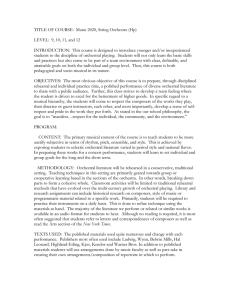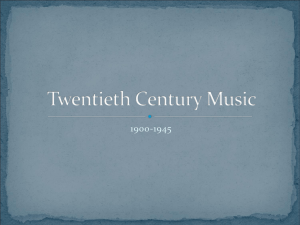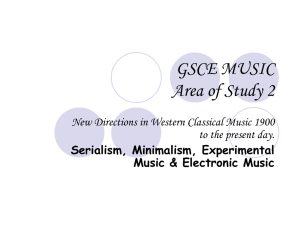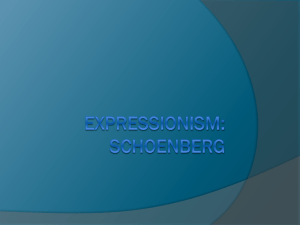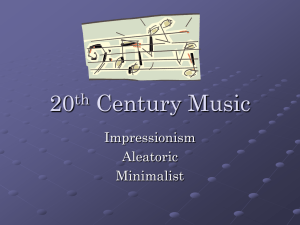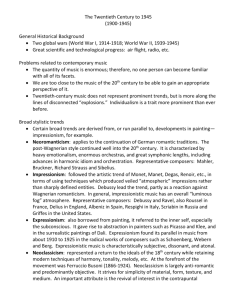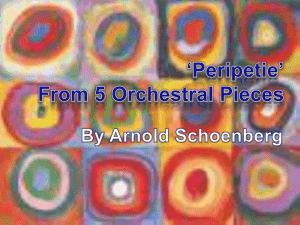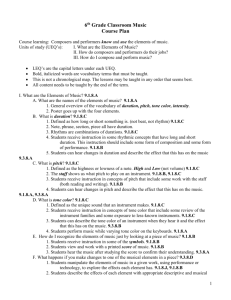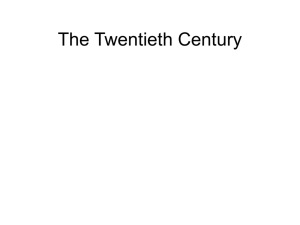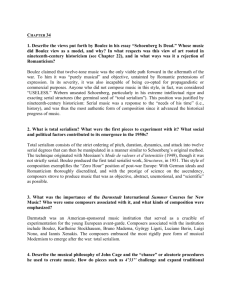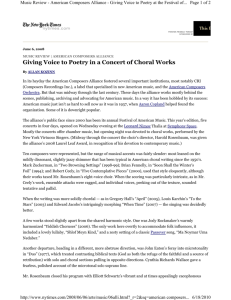20th Century
advertisement
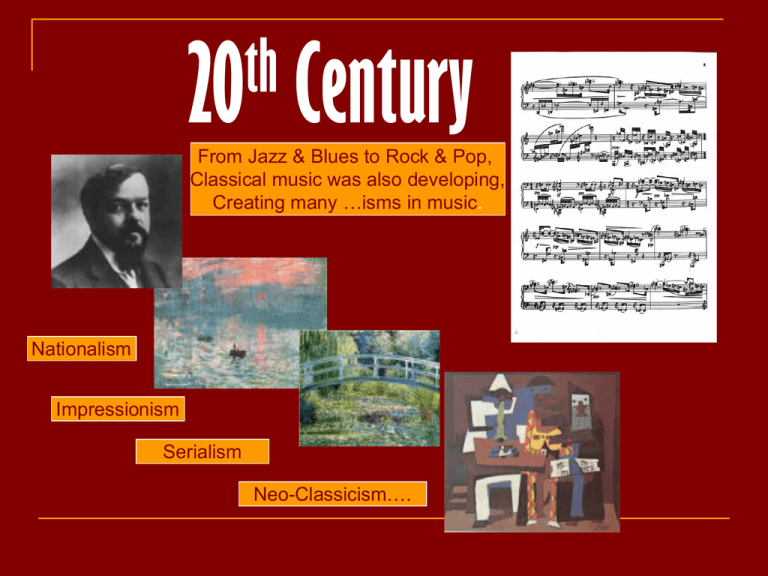
th 20 Century From Jazz & Blues to Rock & Pop, Classical music was also developing, Creating many …isms in music. Nationalism Impressionism Serialism Neo-Classicism…. Nationalism All over the world, composers started to develop music from their heartland as more and more countries cried for independence during the later 1800s. Each composer expressed their own country in their own style. Some took folk tunes and incorporated them into their orchestral works. In America, Copland used cowboy songs in his pieces, making it sound light hearted and fun In Russia, Shostakovich created deeply powerful orchestral music telling the story of Soviet oppression in Russia. Listen out for large orchestral sounds or folk like melodies Impressionist Music Whole Tone Scale – moving in tones C D E F# G# A# B C Debussy used lots of chromaticism as well as whole-tone. Woodwind instruments were prominent Painting a picture like the artists of that era e.g Monet Clair De Lune- Debussy Neo-Classicism This movement rejected the Romantic period and combined modern instrumental groups and harmonies but kept in Classical form. Listen out for… Strong rhythms Small orchestras Abrupt modulations Deliberate wrong notes Stravinsky Mozart Stravinsky Stravinsky is one of the most famous 20th century composers, particularly because of his famous ballet – ‘The Rite of Spring’. Study this work on the L&T DVD and notice how he breaks away from the Romantic age and uses driving rhythms, syncopation and clashing dissonance to create a powerful ritualistic work. All his ideas are centred around very few notes – think of how you could accomplish similar effects in your own compositions! Minimalism Steve Reich Short repeated patterns played in loops. Ostinatos layered rhythms Delay & reverb Heterophony (layering of melodies, also found in Indonesian Gamelan) Serialism Makes use of the TONE ROW – all 12 semitones put into a particular order Sounds Atonal (no Key) Often for Solo piano but can be orchestral or for any kind of groupings Listen to Webern and Schoenberg 6 Little Pieces~ Schoenberg Tone Row Can you create your own Tone Row? Sprechgesang A technique used in vocal music where the singer is required to use the voice in an expressive manner halfway between singing and speaking. Many of the best examples are by Schoenberg from the start of the twentieth century. Listen to this example from his work 'Pierrot Lunaire‘ on the L&T website Another good example of 20th vocal techniques including Sprechgesang is Berio’s Symphonia Remember, the text is not necessarily in German Aleatoric Music of Chance Contains phrases that can be played in any order Glissandos and clashing notes are common Atonal – This music is often not in any key Often small groups, not usually heard as Solo Music Concrete Recorded natural sounds which are transformed using simple editing techniques such as cutting and reassembling, playing backwards, slowing down and speeding up. Other Influences Despite the ‘whacky’ techniques that composers were experimenting with in the 20th century, there were also very pleasant sounding orchestral, operatic and instrumental works being written. Some were influenced by the growing popularisation of Jazz going on at the same time. For example, listen to George Gershwin’s Rhapsody in Blue. Composers such as Rachmaninov still wrote in a warm romantic style while others took a more individual approach. Main Characteristics Composers abandoned traditional harmony and started to write ATONAL music. Lack of form – strange structure – more organic or repetitive. Using improvisation as a means for players to experiment with the full range of their instrument, sometimes creating strange noises! The traditional styles still existed, like symphonies, concertos, operas and chamber music but within these styles, composers would often write in a particular …ism (impressionism for example) Test on concepts below… Nationalism Impressionism Whole Tone Scale Serialism Tone Row Neo-Classicalism Sprechgesang Minimalism Aleatoric Music Concrete Tritone Retrograde Passacaglia/Chaconne Polytonality Atonality Ostinato Irregular Metres Hemiola Discord Cluster Col Legno
